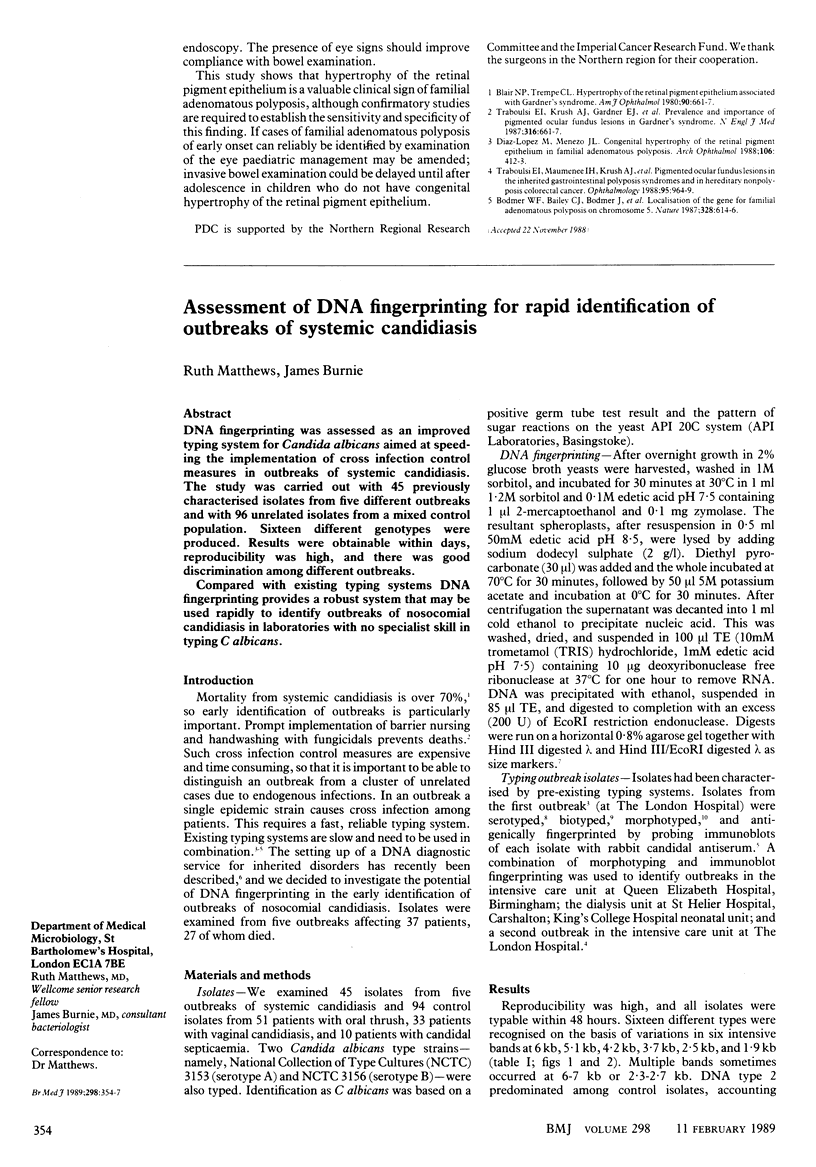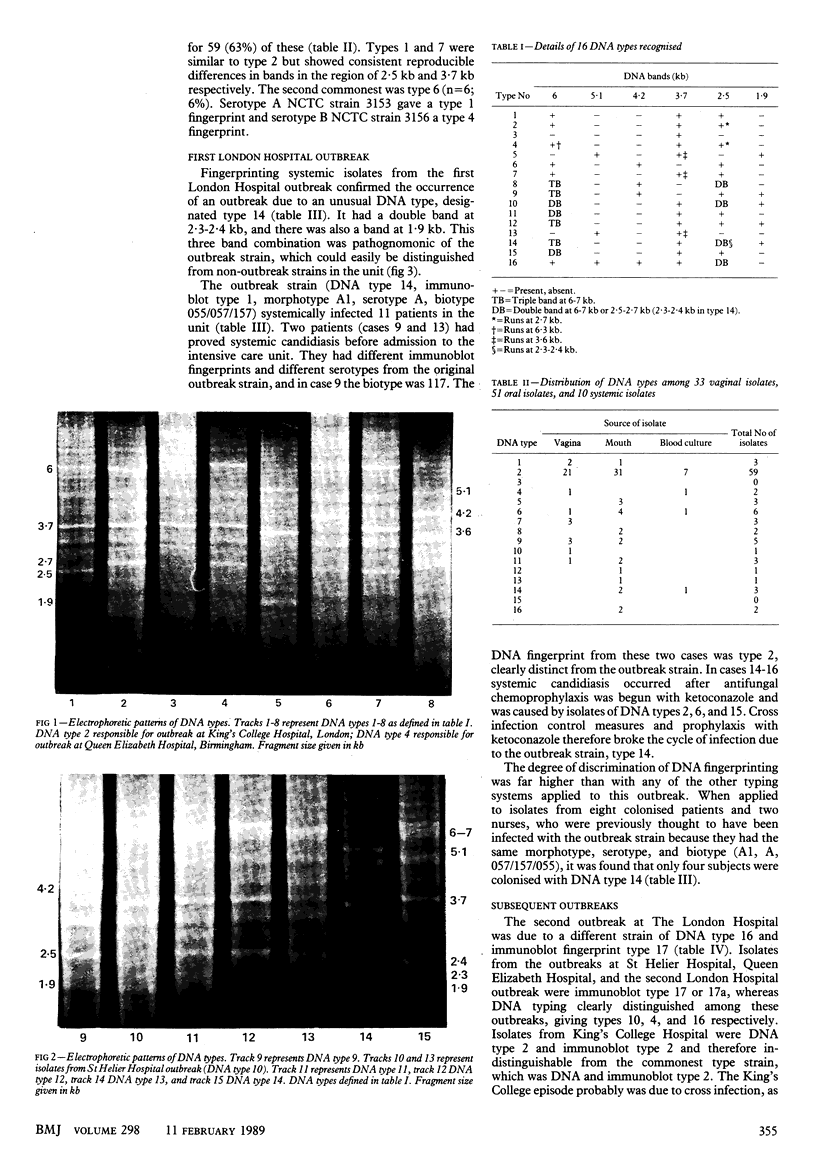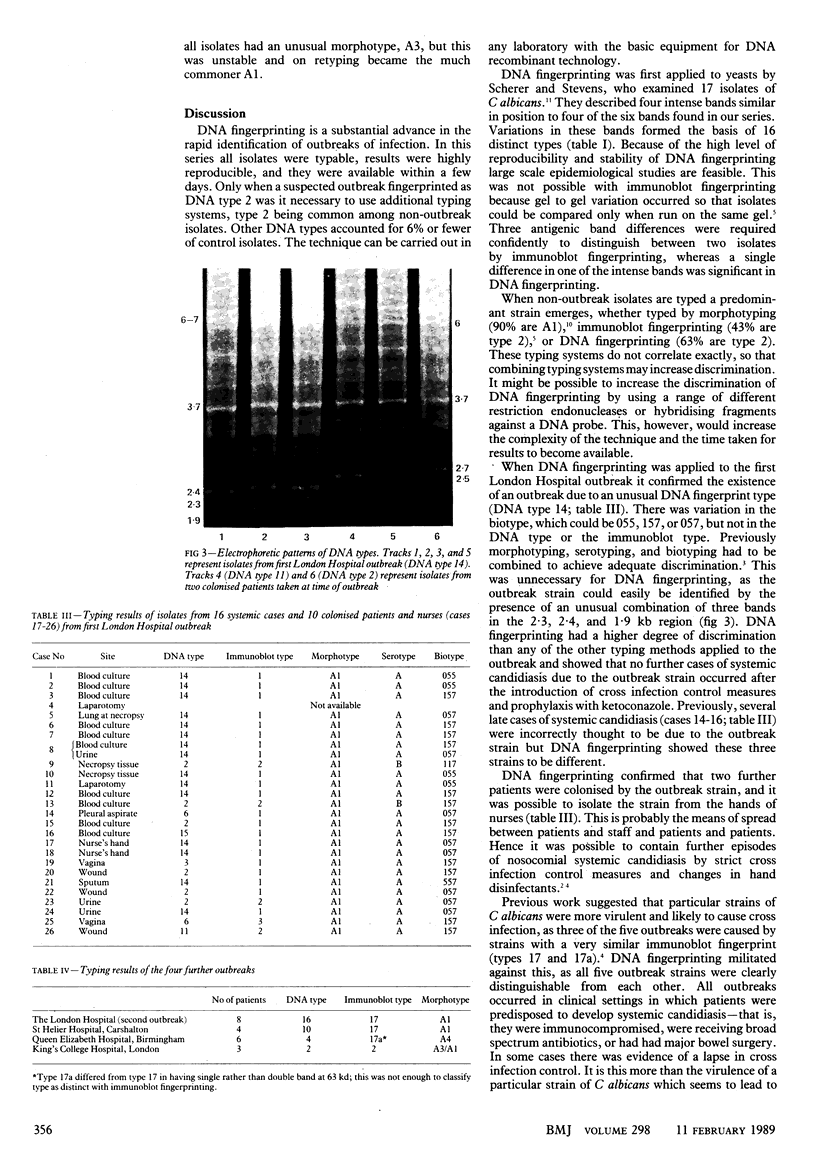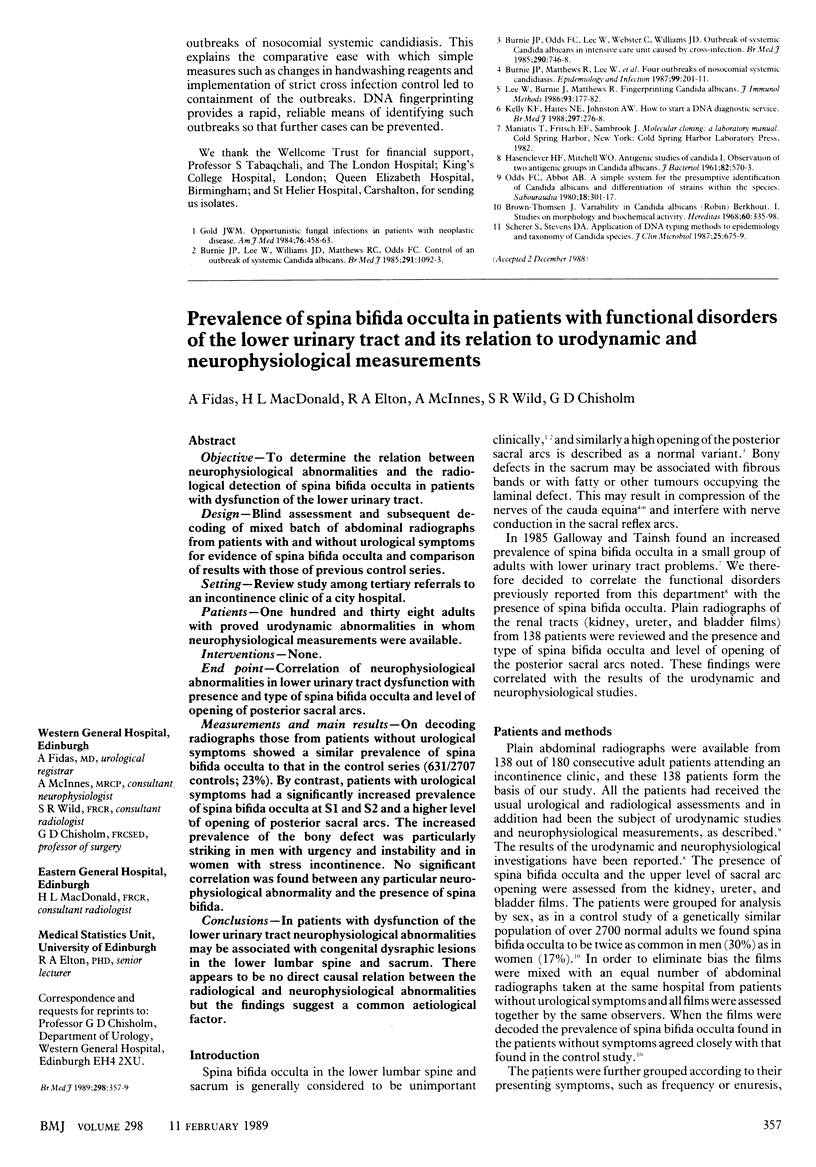Abstract
DNA fingerprinting was assessed as an improved typing system for Candida albicans aimed at speeding the implementation of cross infection control measures in outbreaks of systemic candidiasis. The study was carried out with 45 previously characterised isolates from five different outbreaks and with 96 unrelated isolates from a mixed control population. Sixteen different genotypes were produced. Results were obtainable within days, reproducibility was high, and there was good discrimination among different outbreaks. Compared with existing typing systems DNA fingerprinting provides a robust system that may be used rapidly to identify outbreaks of nosocomial candidiasis in laboratories with no specialist skill in typing C albicans.
Full text
PDF



Images in this article
Selected References
These references are in PubMed. This may not be the complete list of references from this article.
- Burnie J. P., Lee W., Williams J. D., Matthews R. C., Odds F. C. Control of an outbreak of systemic Candida albicans. Br Med J (Clin Res Ed) 1985 Oct 19;291(6502):1092–1093. doi: 10.1136/bmj.291.6502.1092-a. [DOI] [PMC free article] [PubMed] [Google Scholar]
- Burnie J. P., Odds F. C., Lee W., Webster C., Williams J. D. Outbreak of systemic Candida albicans in intensive care unit caused by cross infection. Br Med J (Clin Res Ed) 1985 Mar 9;290(6470):746–748. doi: 10.1136/bmj.290.6470.746. [DOI] [PMC free article] [PubMed] [Google Scholar]
- Gold J. W. Opportunistic fungal infections in patients with neoplastic disease. Am J Med. 1984 Mar;76(3):458–463. doi: 10.1016/0002-9343(84)90665-x. [DOI] [PubMed] [Google Scholar]
- HASENCLEVER H. F., MITCHELL W. O. Antigenic studies of Candida. I. Observation of two antigenic groups in Candida albicans. J Bacteriol. 1961 Oct;82:570–573. doi: 10.1128/jb.82.4.570-573.1961. [DOI] [PMC free article] [PubMed] [Google Scholar]
- Kelly K. F., Haites N. E., Johnston A. W. Start a DNA diagnostic service. BMJ. 1988 Jul 23;297(6643):276–278. doi: 10.1136/bmj.297.6643.276. [DOI] [PMC free article] [PubMed] [Google Scholar]
- Lee W., Burnie J., Matthews R. Fingerprinting Candida albicans. J Immunol Methods. 1986 Nov 6;93(2):177–182. doi: 10.1016/0022-1759(86)90186-9. [DOI] [PubMed] [Google Scholar]
- Odds F. C., Abbott A. B. A simple system for the presumptive identification of Candida albicans and differentiation of strains within the species. Sabouraudia. 1980 Dec;18(4):301–317. [PubMed] [Google Scholar]
- Scherer S., Stevens D. A. Application of DNA typing methods to epidemiology and taxonomy of Candida species. J Clin Microbiol. 1987 Apr;25(4):675–679. doi: 10.1128/jcm.25.4.675-679.1987. [DOI] [PMC free article] [PubMed] [Google Scholar]





